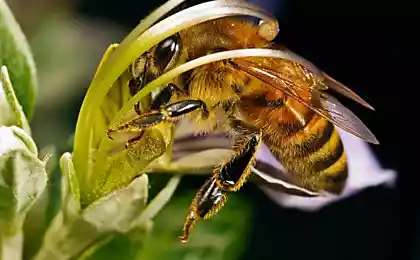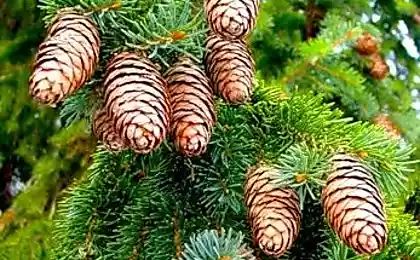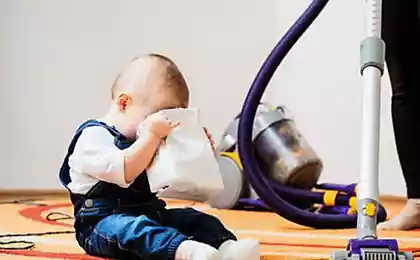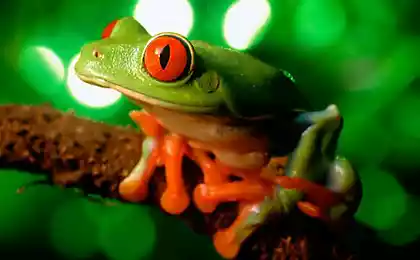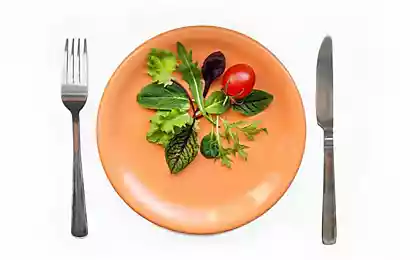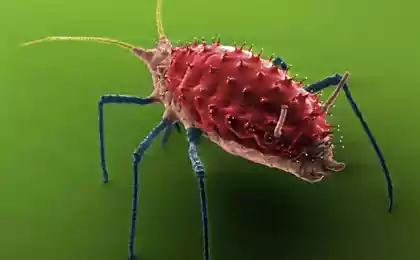1583
Pollen (19 photos)
Geranium pollen particles constitute thousandths of a millimeter, but their romantic adventures immense. Only a few grains of golden pollen of the dozens who made it safely to the stigma of the flower geranium (Geranium phaeum), will participate in fertilization. (Martin Oeggerli)

hide in the folded surface of the stigma of the flower viburnum (Viburnum tinus), pollen particles (gray), who arrived from the neighboring flowers, swollen from moisture. One of them (in the center) is already growing tube which will be supplied semen. Pollen from plants of other species (yellow and green) got here by mistake; genetic mechanism of protection will not allow her to participate in fertilization. (Martin Oeggerli)

Seed flower willow (Salix caprea) did not achieve its goals. Stuck between the petals, it will die. Part of the rise of pollen in the air when the leaves of willow zakolyshutsya the spring breeze, and some particles will bring on themselves bees. (Martin Oeggerli)

Pollen can be of different shapes and sizes. Pumpkin flower pollen particle (center) - thick bill. For comparison, a grain in the lower right corner - pollen me-nots. (Martin Oeggerli)

Due to the winding surface pollen quince (Chaenomeles), moisture is absorbed faster when pollen grain reaches the flower. "The faster hydration, the faster formed pollen tube - explains the Swiss photographer Martin Oggerli, Researcher, University Hospital Basel. - It is very important for fertilization. " (Martin Oeggerli)

Protein-rich pollen white clover (Trifolium repens) - a favorite dish of bees, along with its nectar. (Martin Oeggerli)

Thanks to special thorns, pollen Indian mallow (Abutilon pictum) can be moved on the feathers of birds. (Martin Oeggerli)

Folded structure allows the pollen of Bromeliads (Tillandsia maxima) shrink from dryness and swell from moisture, not a bang. (Martin Oeggerli)

Pollen grains me-nots (Myosotis sylvatica) - one of the smallest in the world; in width they do not exceed five thousandths of a millimeter. (Martin Oeggerli)
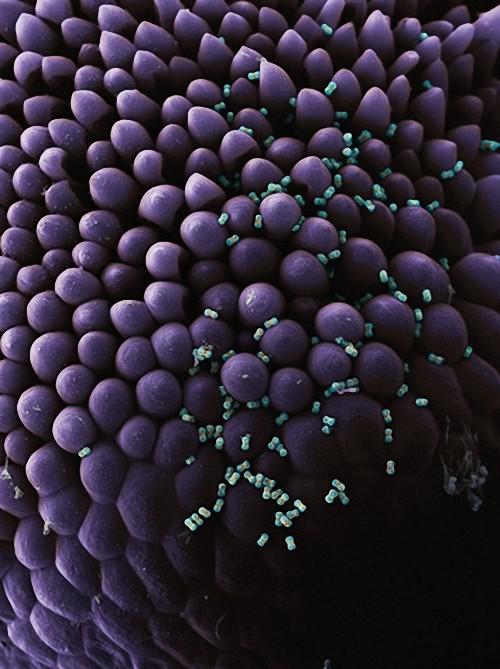
Pollen flytrap (Dionaea muscipula) more than 15 times larger pollen forget-me: thus, the direct relationship between the size of the flower and the pollen grains do not. (Martin Oeggerli)

Pollen silk acacia (Albizia julibrissin) is also more than 15 times larger pollen me-nots. (Martin Oeggerli)

Sticky pollen levkofilluma (family Proteaceae) is transferred to the animals. (Martin Oeggerli)
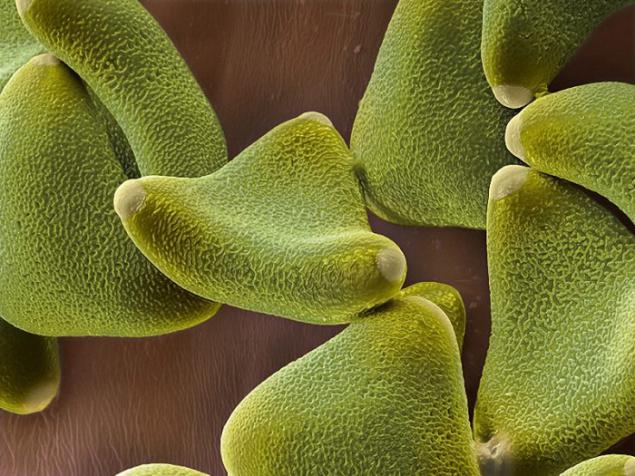
Pollen Japanese Crinum surround long flashy petals attracting insect vectors. Some transformation of pollen grains are understandable. Others still are unclear and require further study. (Martin Oeggerli)

Yellow-green dust that often overwhelms machines - pollen pine family. But this seed landed on insect eggs. Seed moves through the air in just such nondescript "balloons". Windblown pollen - a real problem for people with allergies, especially in those parts of the world, where she covers the earth for millions of years. (Martin Oeggerli)







hide in the folded surface of the stigma of the flower viburnum (Viburnum tinus), pollen particles (gray), who arrived from the neighboring flowers, swollen from moisture. One of them (in the center) is already growing tube which will be supplied semen. Pollen from plants of other species (yellow and green) got here by mistake; genetic mechanism of protection will not allow her to participate in fertilization. (Martin Oeggerli)

Seed flower willow (Salix caprea) did not achieve its goals. Stuck between the petals, it will die. Part of the rise of pollen in the air when the leaves of willow zakolyshutsya the spring breeze, and some particles will bring on themselves bees. (Martin Oeggerli)

Pollen can be of different shapes and sizes. Pumpkin flower pollen particle (center) - thick bill. For comparison, a grain in the lower right corner - pollen me-nots. (Martin Oeggerli)

Due to the winding surface pollen quince (Chaenomeles), moisture is absorbed faster when pollen grain reaches the flower. "The faster hydration, the faster formed pollen tube - explains the Swiss photographer Martin Oggerli, Researcher, University Hospital Basel. - It is very important for fertilization. " (Martin Oeggerli)

Protein-rich pollen white clover (Trifolium repens) - a favorite dish of bees, along with its nectar. (Martin Oeggerli)

Thanks to special thorns, pollen Indian mallow (Abutilon pictum) can be moved on the feathers of birds. (Martin Oeggerli)

Folded structure allows the pollen of Bromeliads (Tillandsia maxima) shrink from dryness and swell from moisture, not a bang. (Martin Oeggerli)

Pollen grains me-nots (Myosotis sylvatica) - one of the smallest in the world; in width they do not exceed five thousandths of a millimeter. (Martin Oeggerli)

Pollen flytrap (Dionaea muscipula) more than 15 times larger pollen forget-me: thus, the direct relationship between the size of the flower and the pollen grains do not. (Martin Oeggerli)

Pollen silk acacia (Albizia julibrissin) is also more than 15 times larger pollen me-nots. (Martin Oeggerli)

Sticky pollen levkofilluma (family Proteaceae) is transferred to the animals. (Martin Oeggerli)

Pollen Japanese Crinum surround long flashy petals attracting insect vectors. Some transformation of pollen grains are understandable. Others still are unclear and require further study. (Martin Oeggerli)

Yellow-green dust that often overwhelms machines - pollen pine family. But this seed landed on insect eggs. Seed moves through the air in just such nondescript "balloons". Windblown pollen - a real problem for people with allergies, especially in those parts of the world, where she covers the earth for millions of years. (Martin Oeggerli)








